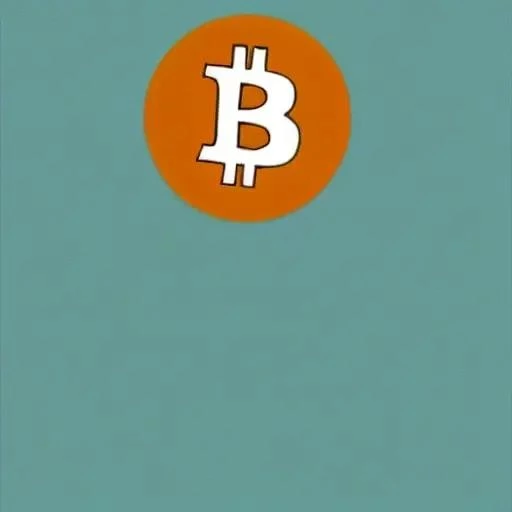For over a decade‚ Bitcoin has stood as the undisputed titan of decentralized finance‚ a digital gold revered for its scarcity and security․ Yet‚ beneath its seemingly immutable surface‚ a quiet revolution has been brewing‚ one that is dramatically expanding its capabilities beyond mere monetary transactions; This groundbreaking innovation‚ known as Bitcoin Ordinals‚ is not merely a technical upgrade; it represents a profound paradigm shift‚ unlocking an entirely new dimension of digital ownership and creative expression directly on the Bitcoin blockchain․
Imagine the internet’s most secure and robust network suddenly transforming into a vibrant canvas for unique digital artifacts‚ each permanently etched into the very fabric of Bitcoin itself․ This is precisely what Ordinals are achieving‚ fundamentally altering our perception of what the world’s premier cryptocurrency can truly be․ By enabling the inscription of arbitrary data onto individual satoshis – the smallest units of Bitcoin – Ordinals are forging a new frontier for digital collectibles‚ art‚ and even decentralized identity‚ all while leveraging Bitcoin’s unparalleled security and immutability․ The implications are enormous‚ promising a future where digital scarcity and authenticity are undeniably guaranteed‚ creating unprecedented opportunities for creators and collectors alike․
Key Information About Bitcoin Ordinals
Here’s a concise overview of Bitcoin Ordinals‚ designed for easy understanding and integration:
| Category | Description |
|---|---|
| Concept Definition | Bitcoin Ordinals are a protocol for inscribing unique digital artifacts (like images‚ text‚ audio‚ video) onto individual satoshis‚ the smallest unit of Bitcoin (1/100‚000‚000 BTC)․ Each inscription is a unique‚ non-fungible asset․ |
| Technical Foundation | Built upon Bitcoin’s Taproot and SegWit upgrades‚ which increased block space efficiency and enabled more complex scripts․ The Ordinal Theory assigns a unique numerical index to each satoshi as it is mined‚ allowing for tracking and inscription․ |
| Creator & Launch | Conceived and developed by Casey Rodarmor‚ a prominent Bitcoin core developer․ The protocol officially launched on January 21‚ 2023․ |
| Functionality | Enables the creation of “digital artifacts” directly on the Bitcoin blockchain‚ similar to Non-Fungible Tokens (NFTs) but with a distinct architectural approach‚ leveraging Bitcoin’s native security model․ |
| Primary Use Cases | Digital art‚ collectibles‚ gaming assets‚ decentralized identity‚ and other forms of unique digital ownership‚ leveraging Bitcoin’s robust settlement layer․ |
| Impact & Significance | Significantly expands Bitcoin’s utility beyond a mere store of value or transactional currency‚ attracting new users and developers to the ecosystem and demonstrating Bitcoin’s adaptability․ |
| Official Reference | Ordinals Documentation |
A New Dawn for Digital Scarcity and Ownership
The innovation underpinning Ordinals is remarkably elegant in its simplicity‚ yet profoundly powerful in its implications․ By leveraging the Ordinal Theory‚ every single satoshi‚ from the very first one ever mined‚ is assigned a unique‚ immutable number․ This meticulous numbering system‚ combined with Bitcoin’s Taproot upgrade‚ permits the attachment of arbitrary data directly to these individual satoshis․ Consequently‚ each inscribed satoshi becomes a truly unique digital artifact‚ provably scarce and permanently recorded on the most secure blockchain in existence․ This distinct approach addresses some of the long-standing criticisms leveled against NFTs on other chains‚ particularly concerning data persistence and decentralization‚ by embedding the asset directly within Bitcoin’s foundational ledger․
Leading blockchain analysts‚ including those at Glassnode and Messari‚ are increasingly pointing to Ordinals as a pivotal moment for Bitcoin’s evolution․ “Ordinals are not just a fleeting trend; they represent a fundamental expansion of Bitcoin’s utility‚” explains Dr․ Evelyn Reed‚ a renowned cryptoeconomist․ “By integrating insights from AI-driven market analytics and historical data‚ we can foresee a future where Bitcoin isn’t just a store of value‚ but a vibrant platform for a myriad of digital assets‚ fundamentally reshaping our understanding of digital property rights․” This expanded utility is already driving a surge in network activity and transaction fees‚ demonstrating the undeniable demand for this novel form of digital ownership․
Industry Examples and Future Horizons
The burgeoning Ordinals ecosystem is already teeming with fascinating projects and burgeoning communities․ Artists are inscribing their groundbreaking digital masterpieces‚ creating verifiable and immutable works that command significant attention and value․ Gaming developers are exploring possibilities for in-game assets that boast true digital scarcity‚ offering players ownership that transcends any single platform․ Moreover‚ experiments in decentralized identity and domain names are surfacing‚ harnessing Bitcoin’s security to anchor personal and digital profiles with unprecedented robustness․ These diverse applications paint a vivid picture of a future where Bitcoin serves as the bedrock for an incredibly rich and varied digital economy‚ moving far beyond its initial purpose․
Looking forward‚ the trajectory of Bitcoin Ordinals appears incredibly bright and transformative․ While challenges remain‚ particularly around scaling solutions and user-friendly interfaces‚ the community’s ingenuity and persistent development efforts are poised to overcome these hurdles․ The optimistic outlook suggests that Ordinals will continue to drive innovation‚ attracting a new wave of developers‚ artists‚ and entrepreneurs to the Bitcoin network․ We are standing at the precipice of a new digital renaissance‚ powered by the very blocks that once seemed solely dedicated to financial transactions․ The impressive rise of Bitcoin Ordinals is not merely a chapter in cryptocurrency history; it is a compelling testament to the boundless potential of decentralized technology‚ boldly venturing into uncharted territories of digital possibility․






